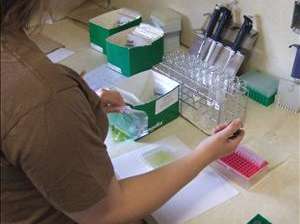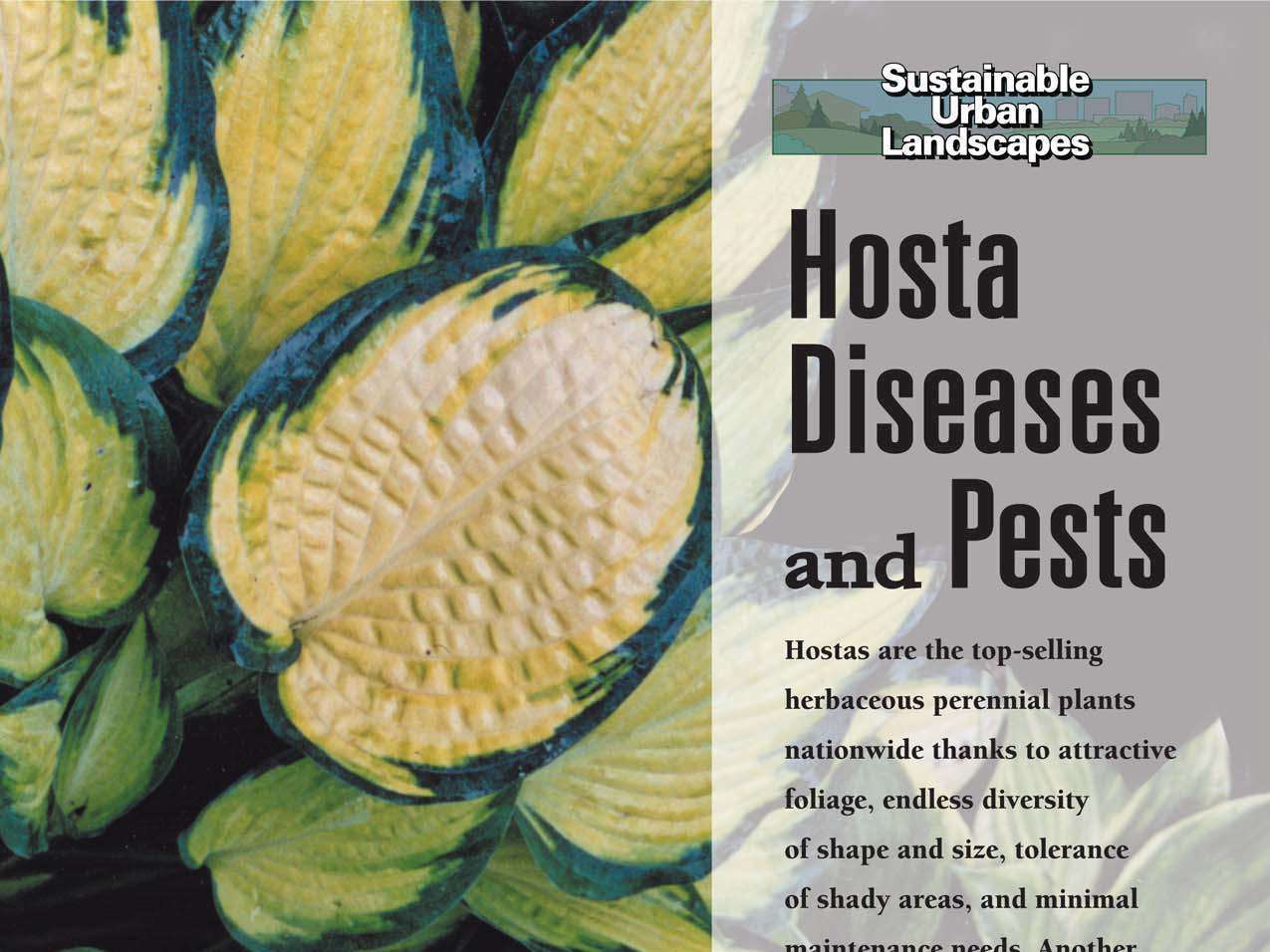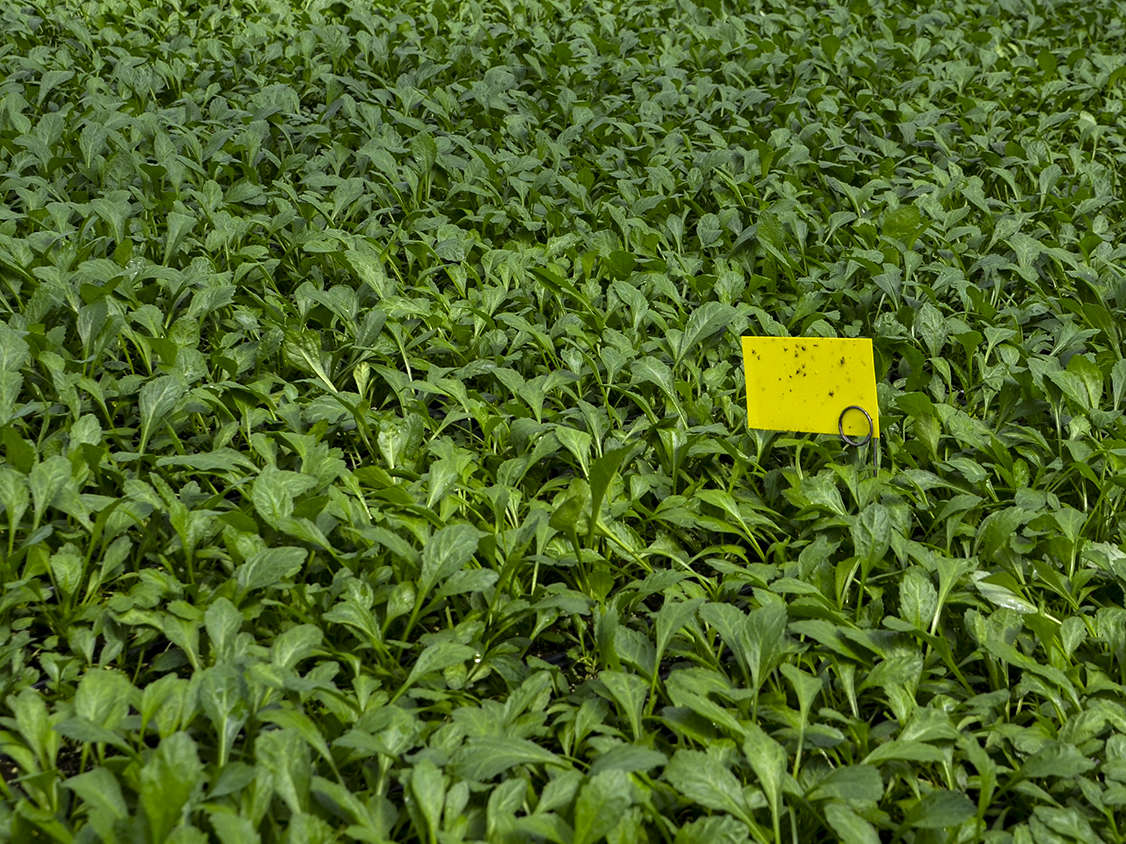Plant Viruses
What You Need to Know to Protect Your Crops
03/20/2013
By: Paul Pilon
Like many ornamental plants, perennials are susceptible to numerous types of plant viruses. Growers often jump to conclusions when they hear the word “virus” and don’t consider that plant viruses are often not as destructive or common as diseases caused by fungal pathogens.
Of course, viruses can cause injury to crops and since there is no cure, they should be taken seriously. Fortunately, there are many steps growers can take to limit the introduction of plant viruses into their production and prevent them from worsening if detected.
Understanding and Detecting Plant Viruses
Problems with plant viruses begin when a virus enters a host plant through some type of wound or injury to a plant cell. These wounds often occur as the result of a mechanical injury such as insect feeding or certain cultural practices. A vector is a carrier of a virus which transmits it to uninfected plants. Insects such as aphids and thrips are common vectors for plant viruses. Other ways that viruses can be transmitted include harvesting cuttings from infected stock plants and using dirty tools with infected plant sap on them.
Virus symptoms can be difficult to identify because they often resemble other cultural issues such as nutrient disorders, herbicide injuries, or fungal diseases. Visible symptoms vary by virus but commonly include abnormal dark green and light green mosaic and mottling of leaves, ring patterns on the foliage, necrotic spots, bumps on the foliage, distortion, reduced vigor, stunting, and abnormal formation or discoloration of the flowers. In some cases, plants may exhibit multiple symptoms or may not show symptoms at all.
Symptomatic plant tissues should be sent to virus testing laboratories for more accurate testing and identification procedures. Agdia, Inc. (www.agdia.com) has developed practical and cost effective ImmunoStrip® test kits for identifying tospoviruses (INSV) and other viruses. Growers can use ImmunoStrip® on-site for fast and reliable results.
When growing perennials susceptible to tospoviruses (INSV and TSWV), growers could intersperse indicator plants such as the fava bean throughout susceptible crops as they tend to rapidly show symptoms of these viruses.
Any symptomatic plants should be quarantined and tested immediately. If they are diagnosed with a virus, they should be removed from the production area and discarded immediately. The only control of infected plants is to destroy them.
Consider Your Sources Carefully
Walters Gardens has a rigorous virus-indexing program in place to ensure only healthy crops reach their customers.
One of the best strategies growers can implement is to obtain starting materials from suppliers with rigorous virus-indexing protocols. The most reputable perennial suppliers have virus-indexing programs in place to ensure their plant materials are virus-indexed prior to shipping them to their customers.
Walters Gardens, Inc. is the prime example of a supplier which takes plant health and viruses very seriously. They routinely test their starting materials for a number of the most common viruses as well as viruses specific to certain perennials such as Dianthus and Hosta (see sidebar).
Walters Gardens, Inc. is 100% committed to offering healthy perennials that their customers will be successful with and if they are concerned about a perennial potentially having a virus, they do not offer it. Virus-indexed varieties are clearly identified in their catalog.
Virus Management Strategies
A virus-indexed perennial is one that has been tested and deemed free of the viruses it was tested for up to the point of testing. After the plant has been tested, it is still possible for it to become infected with a virus from vectors such as insects during production. Starting with virus-indexed starting materials is a great starting point, but it would be impossible for every plant to be tested right before it is shipped. Therefore, growers should inspect incoming plants for virus symptoms.
Management strategies for plant viruses vary by virus. Some are not destructive, having very little effect on plant development and performance. Others are very destructive when they go unmanaged and usually require some type of control. Once plants become infected, they are always infected even if no visible symptoms are expressed.
Growers are advised to take the following steps to prevent viruses in their perennial crops:
1) Scout for insect vectors and watch for early detection of plants expressing virus symptoms.
2) Eliminate weeds from around the production facility to limit potential sources of viruses.
3) Do not allow employees to smoke in production areas.
4) Immediately remove perennials with virus symptoms to prevent the infection from spreading to other plants.
5) Never propagate plants that are infected with viruses.
6) Take steps to reduce the mechanical transmission of viruses such as properly disinfecting scissors, shears, and other tools used to maintain crops.
7) Disinfect used containers and trays or use new ones for each crop.
8) Have employees wash their hands or change gloves between each crop they are working on.
A grower’s first strategy when dealing with plant viruses is to start by purchasing plants from a reputable supplier like Walters Gardens and other propagators that have virus-indexing programs in place. These companies take numerous precautions and test their stock plants diligently to ensure healthy, virus-indexed plants reach their customers.
With no known control methods, prevention is the only method of managing plant viruses. Growers should be certain that incoming plant materials are virus-indexed and take steps to manage virus vectors to maintain healthy crops of perennials.
Paul Pilon is a horticultural consultant, owner of Perennial Solutions Consulting (www.perennialsolutions.com) and author of Perennial Solutions: A Grower’s Guide to Perennial Production. He can be reached at paul@perennialsolutions.com or (616) 366-8588.

